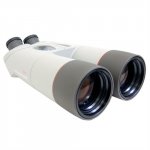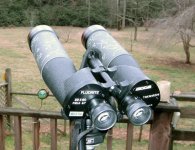Canon said they use fluorite elements in their L-series lenses but I thought they meant all of them. Canon does use fluorite lens elements in SOME of their more expensive L-series lenses mainly camera lenses but not all of them. On the rest of their L-series lenses and the Canon 10x42 IS-L binocular they use the UD lenses as a less expensive alternative. Canon even has found a way to grow Calcium Fluorite crystal for their use which is interesting. I don't know where I got on this Fluorite Crystal line of thought when what I really mean is the Fluoride Lenses that Zeiss uses in their FL line and I believe some other manufacturers use it also and it is really just fluoride ions. There are telescope manufacturers that use the pure fluorite crystal in one or two of their lenses like Takahashi. I guess my point is using Fluorite Crystals and using Fluoride in optical systems can help transmission , as well as, CA according to the boys over at Cloudy Nights.
Dennis
Dennis
Last edited:







